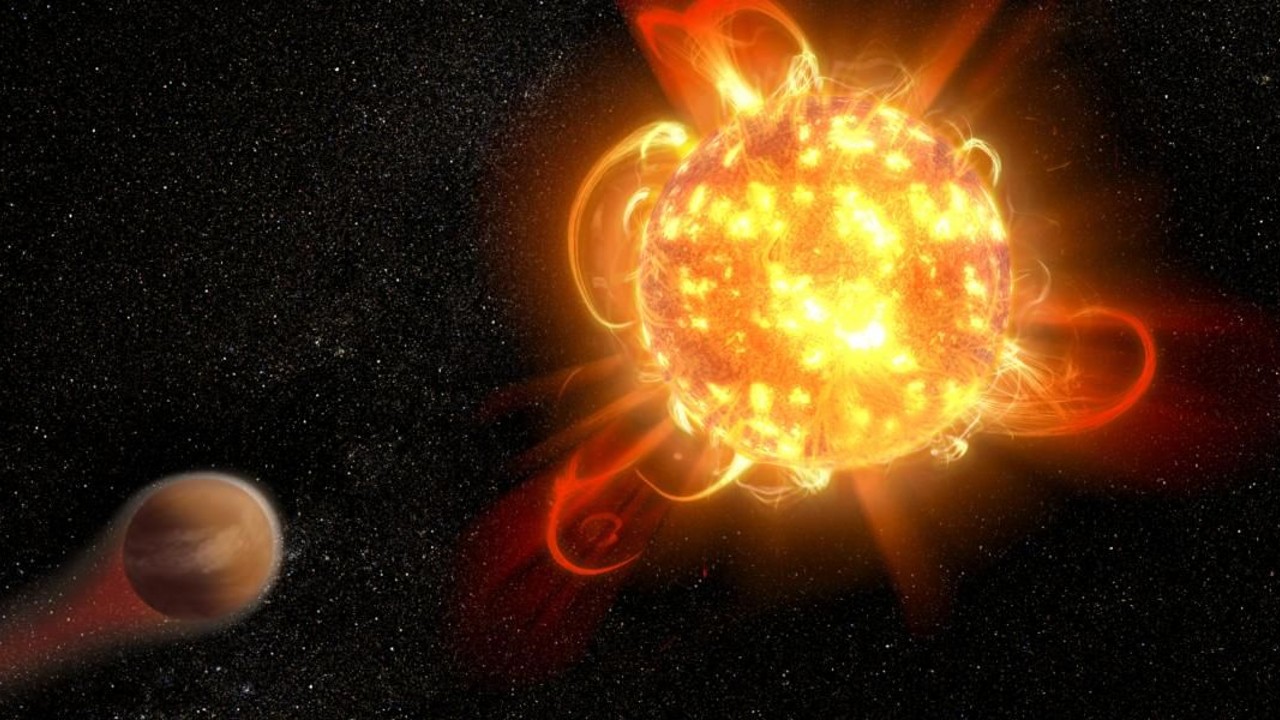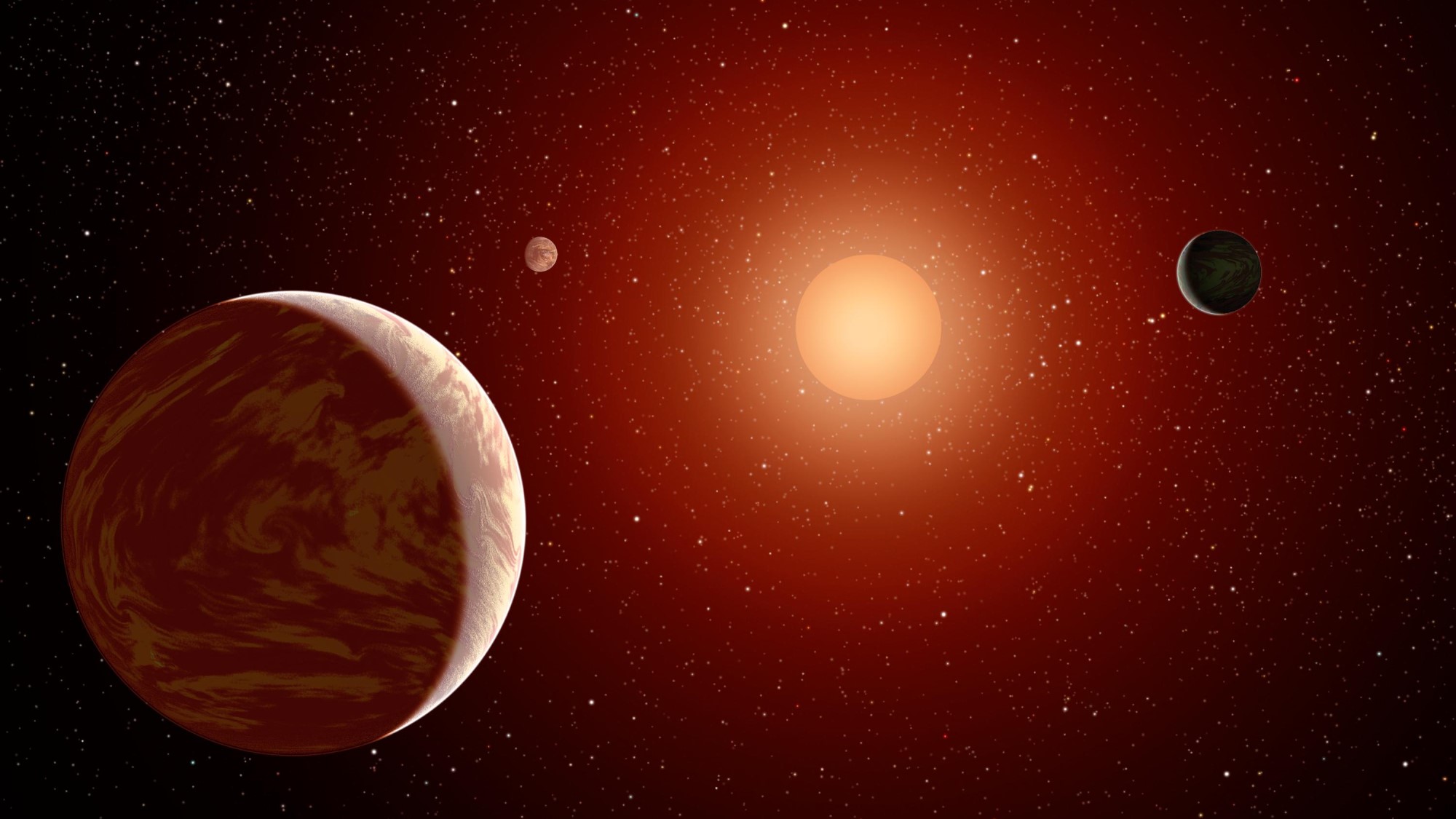Bad news for alien life? Even calm red dwarf stars rage more violently than the sun

A new study of red dwarf stars has revealed that even the quietest examples of this stellar class are more active and wild than the sun.
Red dwarfs, officially known as "M dwarfs" by astronomers, are the most common stars in the Milky Way and can remain placid for long periods of time before erupting with huge "superflares." These flares have previously been measured to be 100 to 1,000 times more powerful than similar flares from the sun, with young red dwarfs particularly tumultuous.
These outbursts, as well as eruptions of scorching-hot plasma known as coronal mass ejections (CMES), can be incredibly destructive to planets orbiting red dwarfs, stripping their atmospheres and emitting enough radiation to boil away liquid water even in the so-called habitable zone around them — the region around a star in which liquid water can exist on a world's surface.
Related: 'Superflares' may make it hard for life to begin around dwarf stars
Such high activity might therefore make it tough for life to take root around red dwarfs, some scientists say.
One system that astronomers are particularly keen to search for potential signs of life is TRAPPIST-1, which contains seven roughly Earth-size planets, at least three of which are in the habitable zone. But TRAPPIST-1 is a red dwarf, and if it erupts with violent flares like fellow red dwarf Proxima Centauri, which in 2019 emitted a flare 14,000 times brighter than its pre-flare brightness, then TRAPPIST-1's life-hosting potential may be relatively low.
The team behind the new study, including scientists from France, Portugal, and Switzerland, looked at observations of 177 red dwarfs collected between 2003 and 2020 by the High Accuracy Radial velocity Planet Searcher (HARPS), an instrument on the 3.6-meter telescope at the European Southern Observatory's La Silla Observatory. This allowed them to characterize the long-term variability of these red dwarf stars.
Breaking space news, the latest updates on rocket launches, skywatching events and more!
All stars exhibit some degree of variability; for example, the sun has an activity cycle that lasts around 11 years. During this cycle, sunspots on our star's surface increase and decrease in frequency. An increased number of sunspots, driven by magnetic activity, brings an increase in solar flares and space weather intensity.
Fortunately, life emerges and evolves on much longer timescales than solar cycles. Here on Earth, for example, life emerged about 4 billion years ago, roughly 500 million years after our planet's formation. If life elsewhere in the Milky Way takes a similar time frame to develop, then the long-term variability and ferocity of red dwarfs could make a significant difference to this process.
To investigate the variability of activity for red dwarfs, the team turned to HARPS data because this instrument is particularly useful in looking at how active stars are. This is because it looks at emissions from a star's chromosphere, the second layer of its atmosphere. Emissions from this layer are driven by magnetic activity just like flares, rather than the fusion that takes place in the stars' cores.
Because astronomers have struggled to study individual red dwarfs in detail, the next best thing is looking at a lot of these stars over a long time period. A long view is needed to really get a clear picture of red dwarf variability, but this type of data is limited.
Related: The search for alien life
"The unambiguous identification of a cycle requires measurements showing its repetition over several periods. This requires data taken over a long period of time," the team, including lead author and University Grenoble Alpes researcher Lucile Mignon, wrote in the new study. "Even if the time coverage is not sufficient for some stars, however, our data can be used to estimate a minimum cycle period if present."
To make up for the lack of long-term data, the team identified "seasons" for individual stars. The scientists defined these seasons as periods of 150 days during which at least five observations took place, with gaps between observations no longer than 40 days. The team chose 150 days as their season because that is the typical maximum limit for the rotation period of red dwarfs, they wrote.
This led the researchers to identify a subset of 57 stars from the total sample of 177 red dwarfs, which demonstrated that variability is a defining feature of this stellar class.
"We find that most stars are significantly variable, even the quietest stars," the authors explained, adding that 75% of the 57 stars in the sample displayed long-term variability. "We find long-term timescales ranging from several years to more than 20 years."
The team acknowledged that this examination of red dwarfs and their variability is really just a first step in understanding these violent stars. They also stated that the true behavior of red dwarfs may be even more complex than these results suggest.
This complexity may emerge from the fact that the stars may have multiple cycles that impact each other, thus explaining why the behavior of red dwarfs has been a challenge to understand.
The team's research has been accepted for publication in the journal Astronomy & Astrophysics and is published on the paper repository arXiv.
Follow us on Twitter @Spacedotcom and on Facebook.

Robert Lea is a science journalist in the U.K. whose articles have been published in Physics World, New Scientist, Astronomy Magazine, All About Space, Newsweek and ZME Science. He also writes about science communication for Elsevier and the European Journal of Physics. Rob holds a bachelor of science degree in physics and astronomy from the U.K.’s Open University. Follow him on Twitter @sciencef1rst.

